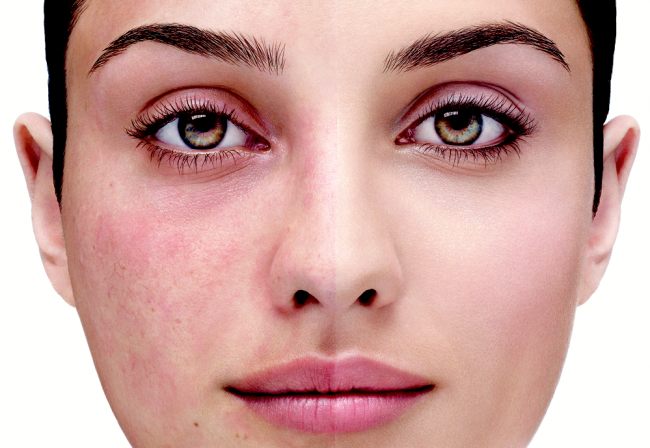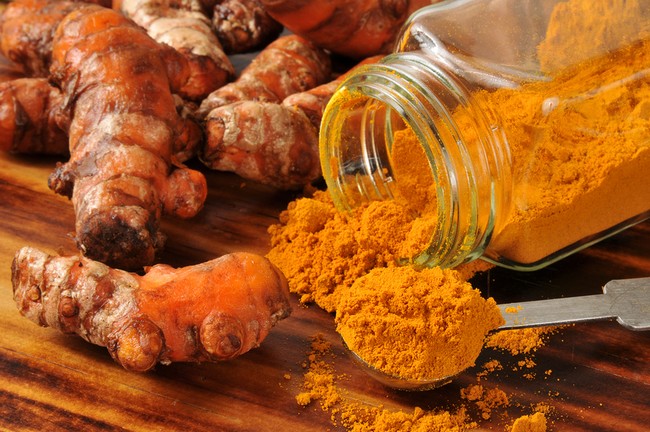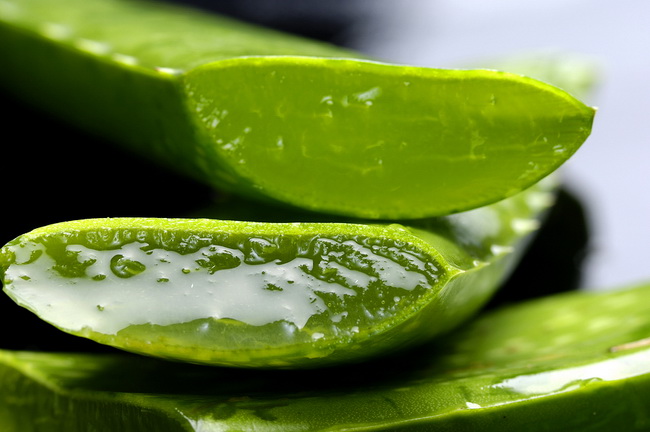- Make It Yourself Lavender Heart-Shaped Bath Bombs!
- 20 Things You Never Knew About “Down There”
- 12 Best Foods For Those Suffering From Arthritis Pain
- 12 Personal Hygiene Mistakes Almost Everyone Makes (Mom Never Told You About #4!)
- 15 Medicinal Plants And Herbs From The Cherokee People
- 12 Mind-Blowing Benefits Of Drinking Coconut Water During Pregnancy
- 12 Outstanding Winter Foods That Won’t Fatten You Up Like A Christmas Turkey
22 Natural Treatments For Rosacea (#15 is Outrageously Easy)

Photo credit: synergieskin.com
If you or someone you love suffers from rosacea, then you know how annoying this skin condition can be. There is no real “cure,” as the main causes of Rosacea are not known. Rosacea is an enlargement of the blood vessels right under the skin, usually on the facial area, which gives the appearance of flushed or reddened skin.
Rosacea is thought to be brought on by excessive temperatures, food sensitivities, or an allergic reaction. Your doctor is likely to prescribe antibiotics, even though you don’t have an actual infection. Antibiotics are supposed to help stop the swelling and inflammation that comes with rosacea. Some doctors will also prescribe cortisone creams or steroid creams. All of these will help to some degree, but they come with side effects.
Before you try those traditional treatments and flood your body with chemicals and antibiotics that will do great harm to your digestive system, why not try some of the many natural treatments that are available? Many people find that they get relief from flare-ups, and some even find that this condition diminishes over time, with home remedies that have no side effects.
If you are using any prescription medications, talk to your doctor before trying any herbal treatments or supplements to ensure that there will be no drug interactions.
Of course, the first thing you will need to do is to avoid the triggers that set off rosacea flare-ups. Now, these differ from person to person, but some of the most common triggers are:
- Exposure to the sun
- Hot beverages
- Very spicy foods
- Strenuous exercise
- Alcohol
- Caffeine
Find your triggers, and avoid them like the plague.
In addition to avoiding your triggers, we have 22 of the best treatments that will help reduce rosacea. Keep reading! One of them is bound to work for you!
Continue to Page 2

Photo credit: bigstock.com
1. Turmeric
One of the reasons doctors give you antibiotics is calm the inflammation of rosacea. Antibiotics, however, will kill the delicate balance of your digestive system, which also means you will be destroying most of your immune system. You can fight inflammation by consuming turmeric, one of the most anti-inflammatory spices on the planet. You can mix one tablespoon of turmeric in a glass of milk each day, and drink it in the morning. You can also make a natural turmeric mask by mixing some turmeric powder with just enough coconut oil to make a paste. Apply this paste to your face and allow it to sit 10 to 15 minutes before rinsing with warm water. Repeat two or three times each week. This will help to fight inflammation from both the inside and the outside.
2. Feverfew
Although most people take this herb as a supplement or as a tea, you will want to use it as a compress. The University of Louisville found that a topical application of feverfew prevents blood from pooling in the capillaries, which reduces redness.
3. Cucumber
Cucumber is well known for reducing swollen blood vessels and easing redness. Try making a cucumber mask by grinding some fresh, organic cucumber in your blender, then applying this mush to your face. Allow to sit for 30 minutes before rinsing with cool water. Repeat once each day to see results in about four weeks.
4. Licorice Root
This ancient herb is well-known for its powerful anti-inflammatory compounds, especially for the skin. One study, performed in 2008 at the University of Science and Technology, found that licorice root extracts contained flavonoids, glycyrrhizin, phytosterols, and coumarins, all of which can help reduce redness in the skin.
5. Chamomile Compress
A compress made with mild, soothing chamomile oil can help to reduce the redness that comes with rosacea. Make some strong chamomile tea, and cool it completely in the refrigerator. Dip a washrag in this mixture and allow the damp rag to sit on your face for 15 to 20 minutes each day. If you are allergic to ragweed, marigolds, or daisies, you should avoid this treatment.
Continue to Page 3

Photo credit: bigstock.com
6. Red Clover
This helpful herb is one of the safest ways to deal with rosacea. Drinking red clover tea twice each day can reduce the redness by targeting inflammation.
7. Apple Mask
This is another home remedy that many people say works wonders when it comes to easing the pain and redness of rosacea. Core an apple of your choice, and grind it in your blender. Apply this mash to your face and let it sit for 15 to 20 minutes. Rinse will with cool water. Repeat once each day, and you should see results in three to four weeks.
8. Grapeseed Extract
Grapeseed extract helps the body make collagen. It is also naturally anti-inflammatory and has powerful antioxidants, both of which help the skin stay clear. Take 50 mg of grapeseed extract supplement three times each day. You should see results in four to six weeks.
9. Horse Chestnut
Many people report that using creams or lotions that contain horse chestnut helped significantly lessen their rosacea symptoms. You can find these creams in most health food stores or online. Use twice each day for best results.
10. Gotu Kola
This ancient herb encourages the healing of the skin. Take one supplement three times each day (approximately 100 to 150 mgs daily).
Continue to Page 4

Photo credit: bigstock.com
11. Aloe Vera
Aloe vera is terrific for any and all skin problems, including rosacea. You can consume aloe vera, and apply it topically to fight this skin condition from both sides. Consume as directed, and apply aloe vera gel directly to the affected area twice each day for best results.
12. Zinc
Zinc is found in every single cell in the body. Without zinc, your body cannot repair the skin. Take 25 mgs twice each day, with meals, to see results in four weeks.
13. Tea Tree Oil
Tea tree oil is a very powerful anti-inflammatory agent that also has antiseptic properties. Some people have stated that they eliminated their rosacea by using nothing more than tea tree oil. Although some people say they used tea tree oil directly on their rosacea, it is very strong. We recommend that you dilute it with a bit of coconut oil or jojoba oil first, or try just one drop on one small area to be certain that it doesn’t burn or trigger a flare-up.
14. Cat’s Claw
This herb reduces food sensitivities by reestablishing a healthy digestive environment. Since some believe that this is the root cause of rosacea, Cat’s Claw can go a long way toward reducing your symptoms. Take 500 mg three times each day. Do not consume Cat’s Claw if you are pregnant, taking blood thinners, or taking any other prescription medication without talking to your doctor.
15. Herbal Paste
This herbal remedy is recommended by many to help deal with rosacea. Mix two teaspoons of turmeric with four teaspoons of coriander powder, then two tablespoons of whole, fresh milk until these ingredients form a paste. Apply the paste as a mask once or twice each day. Allow the mixture to sit on your face for about 10 minutes, then rinse with warm water.
Continue to Page 5

Photo credit: bigstock.com
16. Green Tea
Loaded with antioxidants, anti-inflammatory agents, and anti-carcinogenic compounds, you can’t go wrong with this natural remedy. You can drink several cups of freshly brewed green tea each day. You can also make a double-strength green tea and allow it to cool in the fridge. Soak a wash rag in this tea and apply the damp rag to your face once or twice each day.
17. Flax Seed Oil
Flax seed oil provides the body with essential fatty acids which are terrific at reducing inflammation in the body. Take one teaspoon three times each day, or take a supplement three times each day for best results.
18. Oatmeal
This isn’t as well-known as some other natural treatments, but this is one of the best. Oatmeal soothes the skin and reduces itching, redness, and most of the symptoms of rosacea. Add two tablespoons of oatmeal to just enough water to make a paste. Apply this mixture to your face, and allow it to sit for 10 or 15 minutes before rinsing off with cool water. Repeat once each day for best results.
19. Apple Cider Vinegar
Loaded with anti-inflammatory compounds, apple cider vinegar will help to maintain the pH level of the skin. Soak a washrag in apple cider vinegar, and apply it directly to the affected area once each day. Allow the damp rag to sit on your face for 10 to 15 minutes. You can also put one tablespoon of apple cider vinegar and a bit of honey in a glass of water and drink twice each day.
Continue to Page 6

Photo credit: bigstock.com
20. Rose Hip Oil
Rose hip oil is one of the most common treatments for rosacea, and it works well for many people. This type of oil is found almost everywhere, or you can purchase it online. It works well with blisters, scars, eczema, psoriasis, sunburns, and, of course, rosacea. Apply several drops of rose hip oil directly to the affected area twice each day.
SEE ALSO: 15 of the Best Kept Secrets for Beautiful Skin
21. Cold Compress
When it comes to finding immediate relief from the redness, itching, and swelling of rosacea, nothing beats a quick application of a cold compress. You can keep a damp washrag in the freezer and apply it to your face as often as needed to get immediate relief from your symptoms.
22. Spirulina
Add some organic spirulina powder to your favorite drink or smoothie, or consume a supplement as directed. This is not only a great source of nutrition, but it also contains a substance called gamma-linolenic acid, which is a well-known powerful anti-inflammatory agent.
There are other lifestyle changes that you can make to help manage your rosacea. Eat a healthy, organic diet with plenty of vegetables, citrus fruit, and healthy fats. Reduce your stress levels, and learn to manage stress that you cannot remove from your life.
Most people find that rosacea comes and goes over time. So even on your worst days, keep in mind that this, too, shall pass.
References:
































